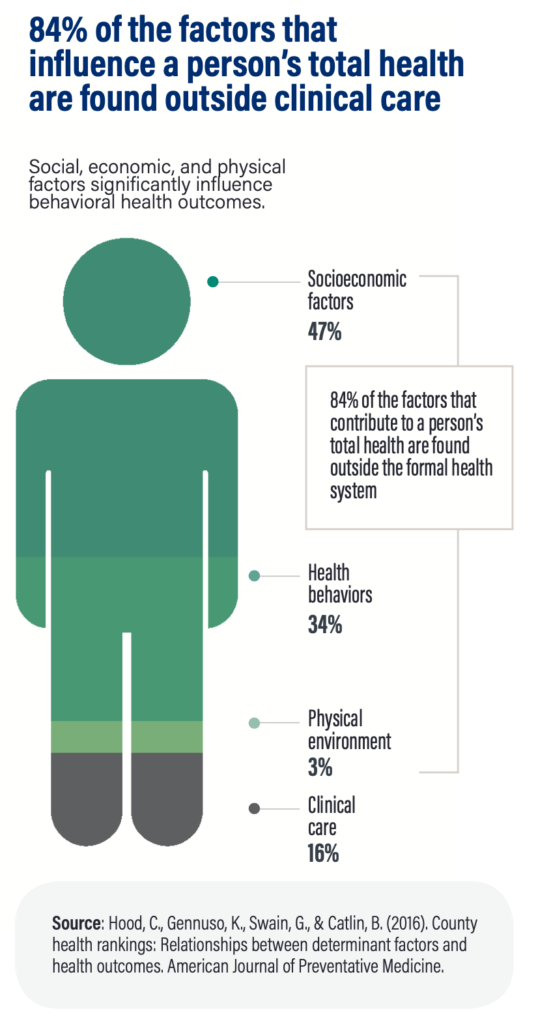A Broad View of Mental Health & Addiction
In order to identify the opportunities that have the greatest potential for impact, this guide approaches mental health disorders (e.g. depression, anxiety, or schizophrenia) and addiction (including both alcohol use disorders and drug use disorders) as a collective. Mental health disorders and SUDs are not the same and do not have to occur in tandem, however co-occurrence is common. Approximately half of the over 20 million people with a SUD in the United States also have a mental health disorder. Mental health disorders and SUDs often also co-occur with other chronic health conditions, such as diabetes, cardiovascular disease, chronic respiratory diseases, and cancer, as well as intellectual disabilities. In fact, most of the factors that influence a person’s total mental and physical health are found outside of the clinical care system. It makes sense, then, that many approaches that address mental health disorders—such as strong social supports, treatment using therapy and/or medication, efforts to reduce stigma or isolation, and connections to educational and employment opportunities—are often also successful in reducing the burden of addiction.
The following pages introduce CHIP’s Framework for Philanthropic Funding, followed by a more detailed discussion of each of the five strategies to help. We start with improving mental health disorders and addiction in young people. We next highlight ways donors can focus specifically on bringing what works to the individuals and populations with the greatest needs. Then we address how to reduce gaps in the availability of effective tools for all people. We end with opportunities to radically transform the way society approaches mental health disorders and addiction, by supporting research and innovation.

